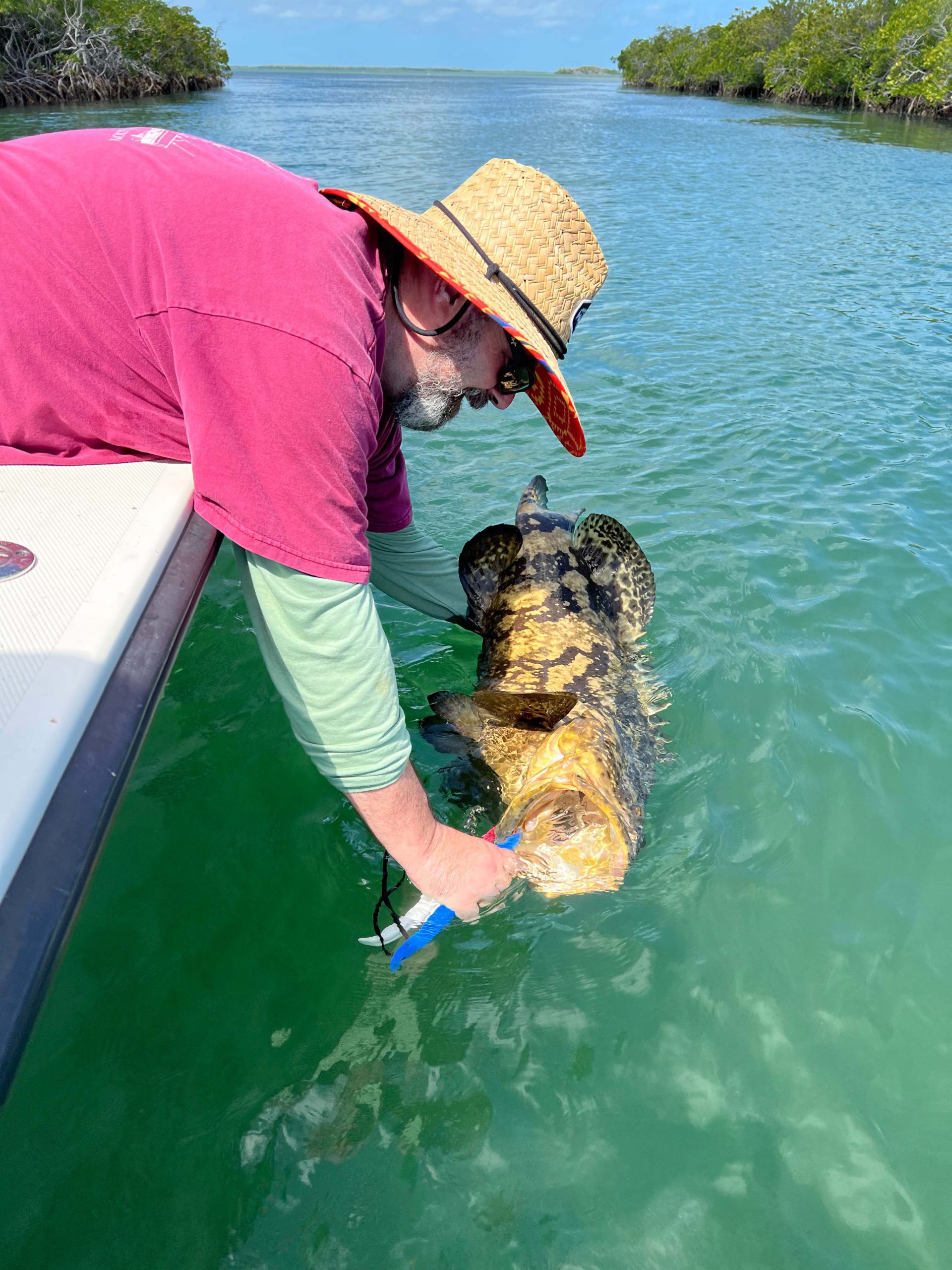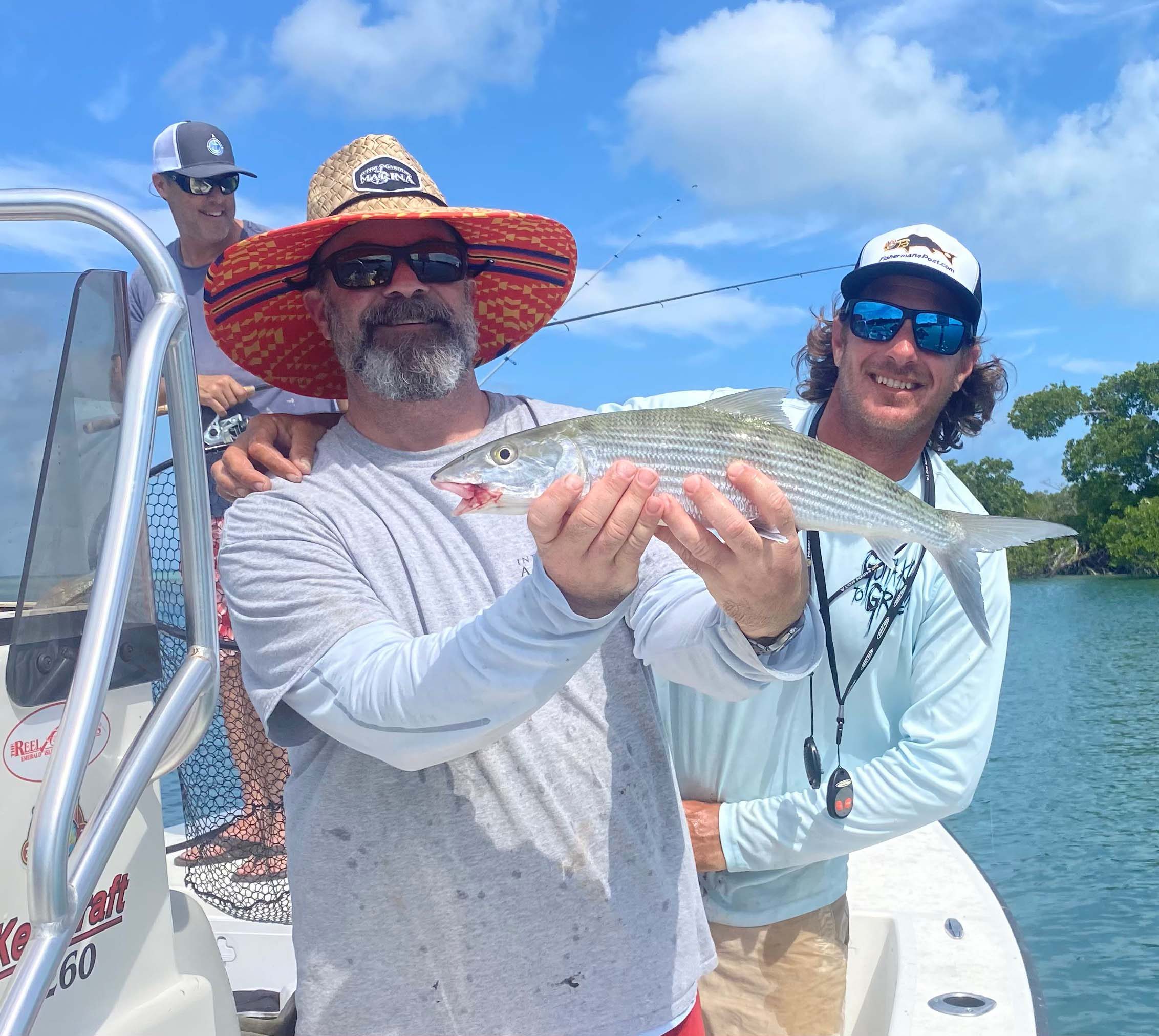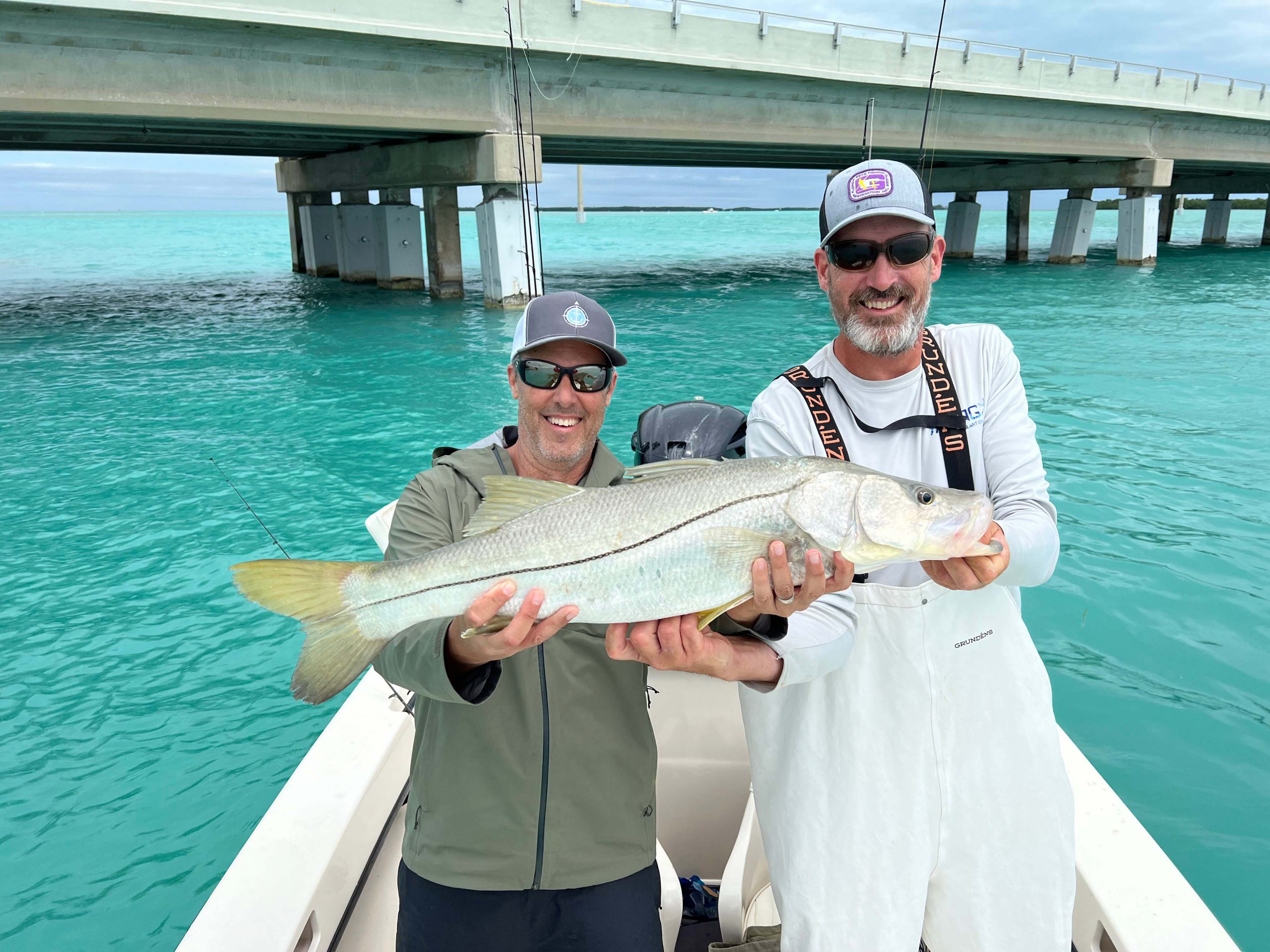Tidelines – April 2022
After the first year had passed since Max Gaspeny moved on from Fisherman’s Post to start guiding out of Islamorada in the Keys, I’ve admitted that it’s an insult to our friendship that I haven’t been down to fish with him. Year after year passed without a visit, and the insult grew stronger and louder.
Then my Swansboro friend Rob Koraly started spending two months—some combination of February, March, and April—guiding out of Cudjoe Key, and he extended the same invitation as Max to come down and fish.
Even then I hesitated, offering the same reasons/excuses of no down time at Fisherman’s Post, no down time as father and husband, too much going on to get away for any significant number of days in a row, etc.
Basically, I was an idiot, but though it may have taken six years, I was ultimately an idiot that got on a plane with longtime friend Adam Meyer, was picked up at the Key West airport by Rob around midnight, stopped for a couple of quick Duval Street drinks and some people watching, and then was in a boat that was docked at Rob’s rental house on Cudjoe Key at 7:30 the next morning headed out for a day of possibilities.

Adam Meyer with the largest goliath grouper of the morning. The 30+ lb. fish was caught on a dead pinfish while targeting a deep cut under some mangrove trees. He was fishing a creek connecting the sound to the Cudjoe Key backcountry with Capt. Rob Koraly.
Max had a couple of charters further north, so Rob, Adam, and I made our way on Day One to a mangrove creek that connected the sound to the backcountry. There was a lot of current, the depth ranged from 8-15 feet, and we tied up close to one of those 15’ deep cuts.
We dropped a live pinfish down first, but very soon it was evident that it didn’t matter if we dropped down a live pinfish, a dead pinfish, a live pilchard, a dead pilchard.
The bite wasn’t as abrupt as a gag or red grouper off the NC coast, but once our 15-35 lb. goliath grouper knew they were hooked, they quickly and forcefully pushed back under the ledge and the mangrove roots. Some came out. Some didn’t.
Max joined us on Day Two for snapper and “fancy” jack fishing. We were in a deep creek with lots of mangroves, and it had good structure bordering the nearby access points from the Gulf. Koraly likes the technique of using small bucktails tipped with shrimp. This technique may not pull in the really big snappers, but you can catch 3-4 nice fish from a spot and then move on when the spot slows.
A spot or two may have slowed, but in general the action was nonstop. Soon we had a cooler full of snappers and jacks that would make up that night’s fish fry.

Adam Meyer took a break from snapper and fancy jack fishing to land this bonefish. He was in a creek in the Cudjoe Key backcountry with Capt. Rob Koraly.
Day Three was Max and Islamorada. When Adam and I confirmed that releasing a tarpon was on our list, Max told us to be at Bud N’ Mary’s at 6:00 am. He wanted us there early for a handful of reasons. First, he wanted to hit the last hour of the falling tide. Second, he wanted some fishing time before a windy front was to move through a little later in the morning. And third, he likes to fish for tarpon in changing light rather than full daylight.
We made our way to the east end of an oceanside Islamorada channel between a couple of flats, a place where tarpon both migrate in and out of the channel, as well as migrate laterally along the mouth of the channel as they cruise along the oceanside flats. We threw out a couple of baits and used the trolling motor to control a slight drift.
Max told us he typically tells clients it should take about three minutes to get a tarpon bite. Of course, sometimes he has to say three more minutes and then three more minutes and then three more minutes several times before the rod goes down, but on our morning, he only had to say three more minutes two times.
The rod went down, and the show began. Our tarpon bite was like most tarpon bites—it was electric. The tarpon went on runs, gave us several jumps, and basically went nuts.
I was the first to the rod, strategically sitting between Adam and the back of the boat as we drifted, and as Max chased the fish down, I was finally able to gain some line back. Once we got close, the tarpon settled into a close quarters game of tug-of-war.
Videos. Photos. A release. Back in position. Three more minutes. Adam, more strategically waiting on the second bite, is tight to a larger tarpon that went on bigger runs and gave us more jumps.
The next target species was snook. Snook like structure and current, and Max had been on some bridge snook throughout the winter. When we saw something crashing bait up close to the bridge shoulder, I was told to cast my big, live pilchard up to the one piling and then let my bait swing in the current.
The snook fight is a curious one. We were up current, so when the snook decided to run, there was nothing I could do to stop it. Then when they stop, it’s almost like they’re frozen and you can gain back line. I would bring the snook my way, but then it would seemingly wake up and then go on another run that I could do little to nothing to stop.

Gary Hurley holds up a snook that it took him six years to catch. The snook hit a live pilchard off a bridge piling near Islamorada while he was (finally) fishing with Capt. Max Gaspeny, a full-time inshore guide out of Bud N’ Mary’s Marina.
I’m out of space, and I didn’t even get to talk about sight casting tube lures to barracuda on Gulf-side flats, throwing topwaters for jacks, bluerunners, and sharks (spinners and blacktips), fan casting shrimp baits on hard-bottom, patchy seagrass flats for bonefish, or even stories of pina coladas with floaters, raw oysters, house-smoked fish dip, and the biggest (by far) hermit crab I’ve ever seen.
Capt. Rob Koraly, when he isn’t in Cudjoe Key for a couple of months, runs Sandbar Safari Charters out of Swansboro. Capt. Max Gaspeny operates out of Bud N’ Mary’s in Islamorada year-round.
Don’t be like me. Don’t let six years go by before you make a trip to the Keys to fish with Gaspeny and/or Koraly. Whatever reason you have not to go, I can counter with a tarpon, a snook, a goliath, a bonefish, a snapper, and more.
